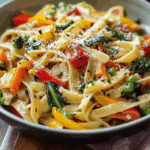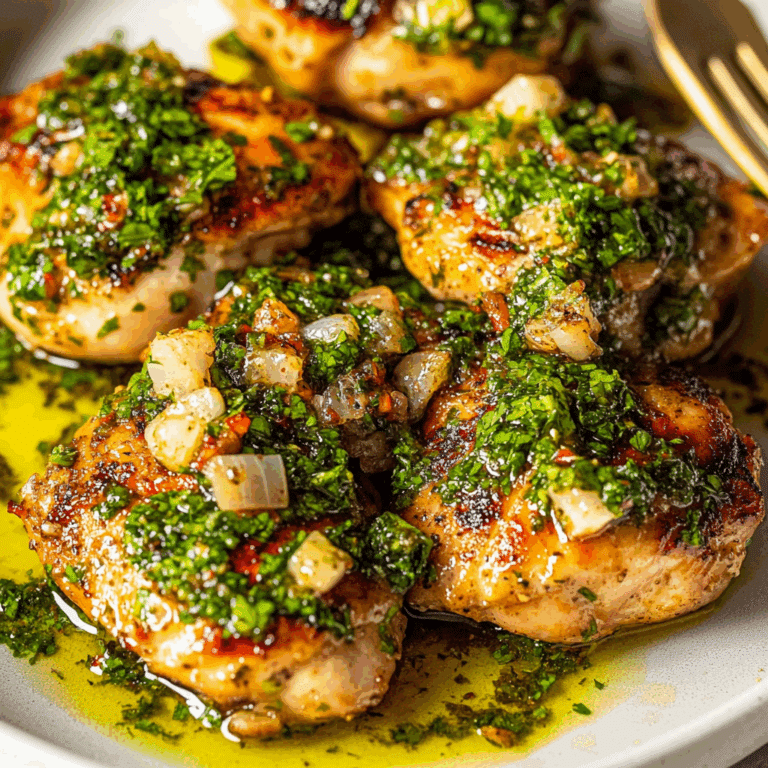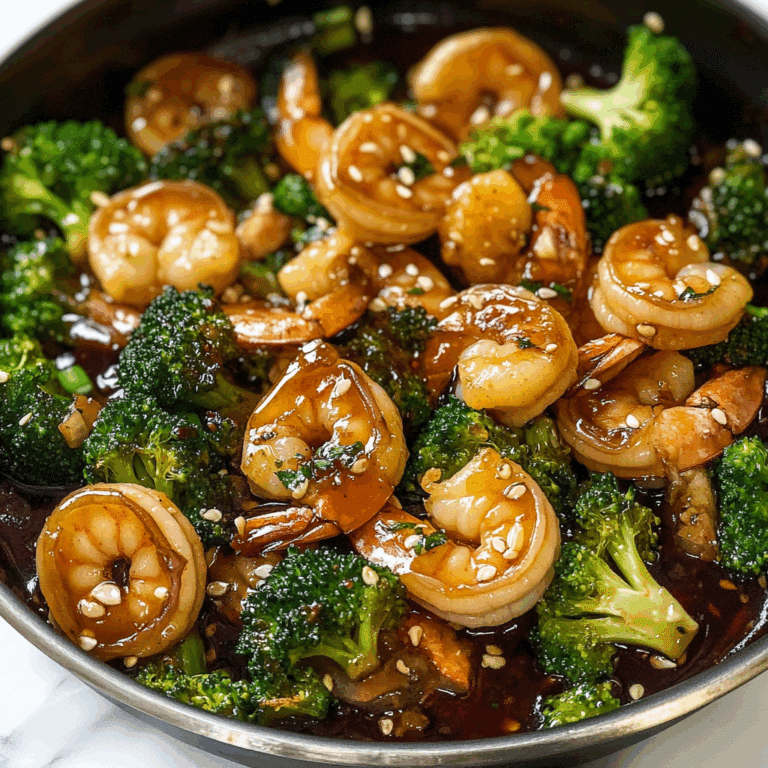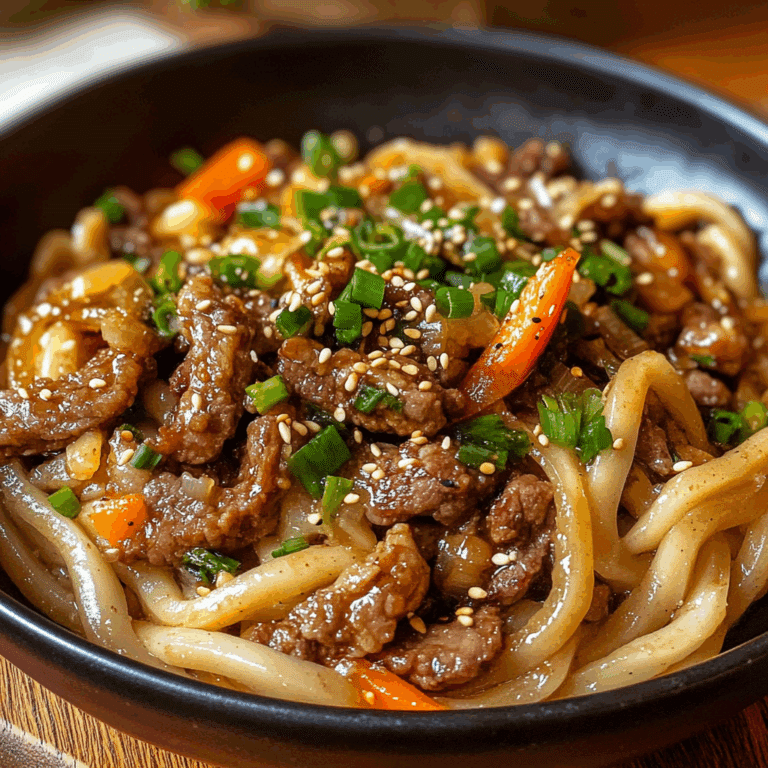Easy Pasta Primavera Recipe for Fresh Flavor
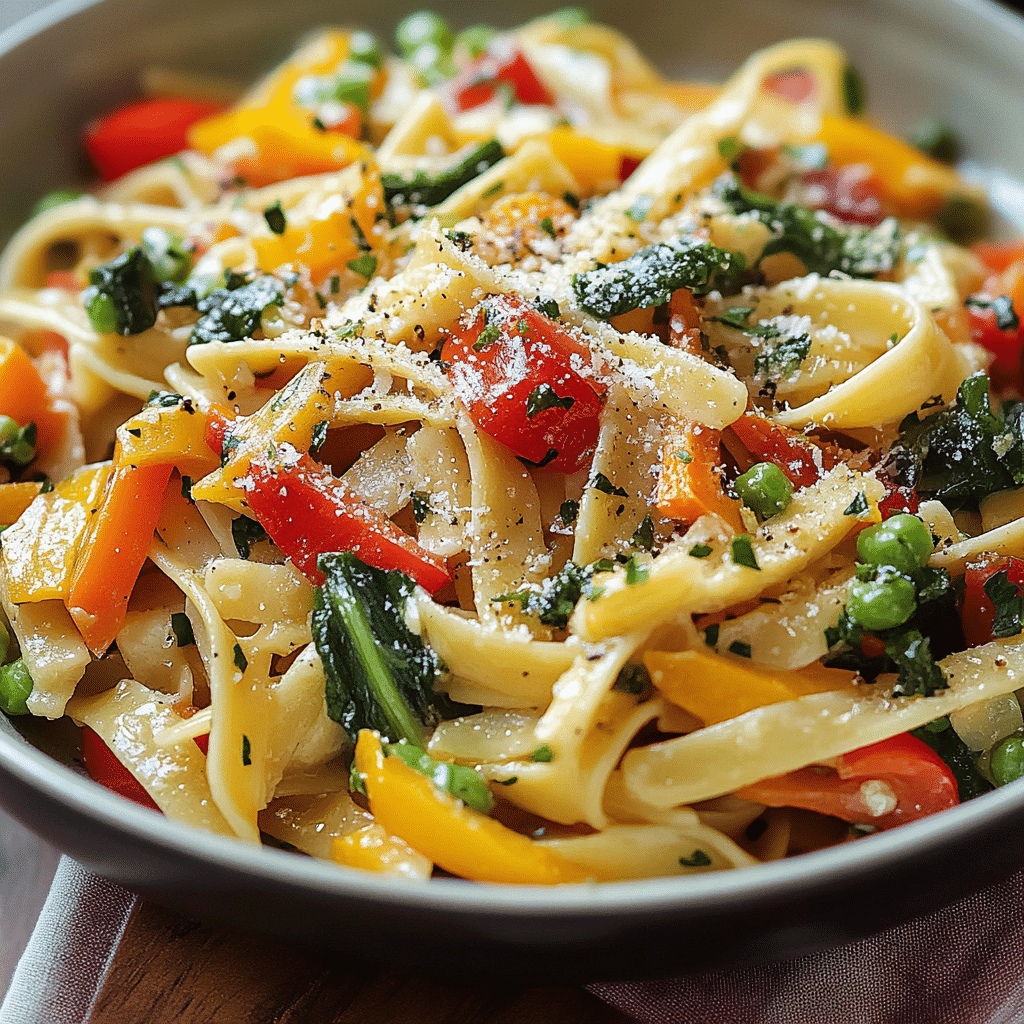
Discover a vibrant Pasta Primavera recipe bursting with fresh veggies and simple ingredients for a quick, flavorful meal anytime. This delightful dish combines al dente pasta with a rainbow of garden-fresh vegetables, tossed in a light, aromatic sauce that highlights the natural flavors. Whether you’re looking for a healthy dinner option or a colorful dish to impress guests, Pasta Primavera is a crowd-pleaser that’s as nourishing as it is delicious.
Why You’ll Love This Recipe
- Fresh and Flavorful: The combination of crisp vegetables and herbs creates a bright, refreshing taste that’s perfect for any season.
- Quick and Easy: Ready in under 30 minutes, this recipe fits perfectly into busy weeknights without sacrificing flavor.
- Customizable: Easily swap in your favorite veggies or proteins to tailor the dish to your preferences.
- Nutritious Boost: Packed with vitamins, fiber, and antioxidants from a variety of colorful vegetables.
- Light Yet Satisfying: Balanced carbs and fresh produce make this a meal that leaves you energized and content.
Ingredients You’ll Need
Every ingredient in this Pasta Primavera recipe is simple yet essential, contributing texture, color, or flavor that makes the dish sing. Fresh vegetables add crunch and vibrancy, while a few staple pantry items come together to create a harmonious sauce.
- Pasta: Choose your favorite type—penne, fettuccine, or spaghetti—for perfect texture and ease of eating.
- Olive Oil: A good quality extra virgin olive oil adds richness and helps meld the flavors.
- Garlic: Freshly minced garlic brings a fragrant warmth to the dish.
- Cherry Tomatoes: These add bursts of juicy sweetness and a pop of color.
- Zucchini: Thinly sliced for tenderness and a mild, fresh flavor.
- Bell Peppers: Bright and crunchy, they provide beautiful color contrast and a slight sweetness.
- Asparagus: Adds a subtle earthiness and a pleasant snap.
- Parmesan Cheese: Freshly grated for a nutty, savory finish.
- Lemon Juice: Just a splash to brighten the whole dish and enhance all the flavors.
- Fresh Basil: Chopped basil leaves add a fragrant, herbaceous note that ties everything together.
- Salt and Pepper: Essential seasonings to enhance the natural flavors of the veggies and pasta.
Variations for Pasta Primavera
One of the best parts of making Pasta Primavera is how easy it is to customize. Whether you want to adjust for dietary needs or just mix up the flavors, here are some tasty ideas to personalize your dish.
- Add Protein: Toss in grilled chicken, shrimp, or tofu for a more filling meal.
- Use Different Veggies: Try broccoli, sugar snap peas, or spinach when you want a change of pace.
- Make it Creamy: Stir in a splash of cream or ricotta cheese for a rich, comforting texture.
- Gluten-Free Pasta: Swap regular pasta with gluten-free or whole wheat varieties to suit your dietary needs.
- Spicy Kick: Add red pepper flakes or a dash of hot sauce for those who love a little heat.

How to Make Pasta Primavera
Step 1: Prepare the Vegetables
Wash and slice all your chosen vegetables uniformly, so they cook evenly. This step ensures every bite has the perfect balance of crunch and tenderness.
Step 2: Cook the Pasta
Bring a large pot of salted water to a boil and cook the pasta according to package directions until al dente. Drain, reserving a cup of pasta water for later.
Step 3: Sauté the Vegetables
Heat olive oil in a large skillet over medium heat. Add garlic and cook just until fragrant, about 30 seconds. Then add the vegetables, starting with firmer ones like asparagus and peppers, and sauté until tender-crisp.
Step 4: Combine Pasta and Veggies
Toss the drained pasta into the skillet with the vegetables. Add a splash of reserved pasta water to create a light sauce, then stir in lemon juice, salt, and pepper to taste.
Step 5: Finish and Serve
Remove from heat and sprinkle generously with fresh basil and grated Parmesan cheese. Give everything a gentle toss, then plate and enjoy your vibrant Pasta Primavera.
Pro Tips for Making Pasta Primavera
- Use Fresh, Seasonal Veggies: The fresher your ingredients, the brighter the flavors in your dish.
- Don’t Overcook the Vegetables: Keep them crisp for texture contrast.
- Reserve Pasta Water: This starchy water helps bind the sauce and ensures your pasta stays moist.
- Use Quality Olive Oil: It makes a noticeable difference in flavor and richness.
- Chop Herbs Fresh: Add basil and other herbs at the end to preserve their aroma and color.
How to Serve Pasta Primavera
Garnishes
Top your Pasta Primavera with extra Parmesan cheese, freshly cracked black pepper, or a drizzle of good olive oil. For a little extra flair, sprinkle toasted pine nuts or fresh parsley.
Side Dishes
This dish pairs beautifully with a crisp green salad, crusty garlic bread, or a light soup to round out the meal while keeping it bright and fresh.
Creative Ways to Present
Serve Pasta Primavera in colorful bowls or on rustic wooden plates to showcase its vibrant nature. For gatherings, present it family-style on a big platter with fresh herbs scattered on top.
Make Ahead and Storage
Storing Leftovers
Keep your leftover Pasta Primavera in an airtight container in the refrigerator for up to 3 days. Veggies maintain their texture best if stored separately or lightly reheated.
Freezing
Because of the fresh veggies, freezing this dish is not ideal as it can affect texture and flavor. Instead, freeze the pasta and sauce separately if needed.
Reheating
Reheat gently in a skillet over low heat with a splash of olive oil or water to prevent drying out. Avoid the microwave to keep vegetables from becoming mushy.
FAQs
Can I use frozen vegetables for Pasta Primavera?
Yes, but fresh veggies are preferred for the best texture and flavor. If using frozen, be sure to thaw and drain them well before cooking.
Is Pasta Primavera suitable for vegetarians?
Absolutely! This recipe is naturally vegetarian and can easily be made vegan by omitting Parmesan or substituting it with a plant-based cheese.
How can I make Pasta Primavera gluten-free?
Simply replace regular pasta with gluten-free pasta varieties available in most stores, and follow the recipe as usual.
What kinds of pasta work best?
Short or long pasta like penne, fusilli, spaghetti, or fettuccine all work wonderfully, depending on your preference.
Can I prepare Pasta Primavera in advance?
Yes, you can prep the vegetables and cook the pasta ahead of time, then quickly assemble and heat just before serving for a no-fuss meal.
Final Thoughts
If you’re looking for a dish that’s both easy to make and bursting with fresh flavor, give this Pasta Primavera recipe a try. It’s a perfect way to enjoy seasonal vegetables while enjoying a vibrant, satisfying meal. Once you taste this colorful, crisp, and beautifully balanced pasta, it’s sure to become a favorite in your kitchen too!
Related Posts
- Easy Baked Chicken Ricotta Meatballs with Spinach
- Why Creamy Tomato Garlic Pasta Beats All Others
- Why The Best Hobo Casserole Ground Beef Stands Out
Pasta Primavera
A vibrant and fresh Pasta Primavera recipe featuring al dente pasta tossed with a colorful medley of garden-fresh vegetables in a light, aromatic lemon and olive oil sauce. Quick to prepare and easily customizable, this dish is perfect for a healthy and satisfying meal any time of year.
- Prep Time: 10 minutes
- Cook Time: 15 minutes
- Total Time: 25 minutes
- Yield: 4 servings 1x
- Category: Main Course
- Method: Sautéing
- Cuisine: Italian
- Diet: Vegetarian, Gluten Free (if using gluten-free pasta)
Ingredients
Pasta
- 8 oz penne, fettuccine, or spaghetti pasta
Vegetables
- 1 cup cherry tomatoes, halved
- 1 medium zucchini, thinly sliced
- 1 bell pepper, sliced (any color)
- 1 cup asparagus, trimmed and cut into 2-inch pieces
- 2 cloves garlic, minced
Other Ingredients
- 3 tbsp extra virgin olive oil
- 1 tbsp fresh lemon juice
- 1/4 cup freshly grated Parmesan cheese
- 1/4 cup fresh basil, chopped
- Salt and freshly ground black pepper, to taste
Instructions
- Prepare the Vegetables: Wash and slice all your chosen vegetables uniformly, so they cook evenly. This ensures every bite has the perfect balance of crunch and tenderness.
- Cook the Pasta: Bring a large pot of salted water to a boil and cook the pasta according to package directions until al dente. Drain, reserving a cup of pasta water for later.
- Sauté the Vegetables: Heat olive oil in a large skillet over medium heat. Add minced garlic and cook just until fragrant, about 30 seconds. Then add the vegetables, starting with firmer ones like asparagus and bell peppers, and sauté until tender-crisp.
- Combine Pasta and Veggies: Toss the drained pasta into the skillet with the vegetables. Add a splash of reserved pasta water to create a light sauce, then stir in lemon juice, salt, and pepper to taste.
- Finish and Serve: Remove from heat and sprinkle generously with fresh basil and grated Parmesan cheese. Give everything a gentle toss, then plate and enjoy your vibrant Pasta Primavera.
Notes
- Use fresh, seasonal vegetables for the brightest flavors.
- Don’t overcook the vegetables; keep them crisp for texture contrast.
- Reserve pasta water to help bind the sauce and keep pasta moist.
- Use high quality extra virgin olive oil for richness and flavor.
- Add fresh chopped herbs at the end to preserve their aroma and color.
- Customize by adding proteins such as grilled chicken, shrimp, or tofu.
- Try different vegetables like broccoli, sugar snap peas, or spinach for variety.
- Make it creamy by stirring in cream or ricotta cheese if desired.
- Swap for gluten-free or whole wheat pasta to suit dietary needs.
- Add a spicy kick with red pepper flakes or hot sauce if preferred.
Nutrition
- Serving Size: 1 cup
- Calories: 320 kcal
- Sugar: 5 g
- Sodium: 180 mg
- Fat: 10 g
- Saturated Fat: 2 g
- Unsaturated Fat: 7 g
- Trans Fat: 0 g
- Carbohydrates: 45 g
- Fiber: 5 g
- Protein: 9 g
- Cholesterol: 5 mg
Keywords: Pasta Primavera, easy pasta recipe, vegetarian pasta, quick dinner, fresh vegetables, healthy dinner, Italian pasta, gluten-free pasta option

